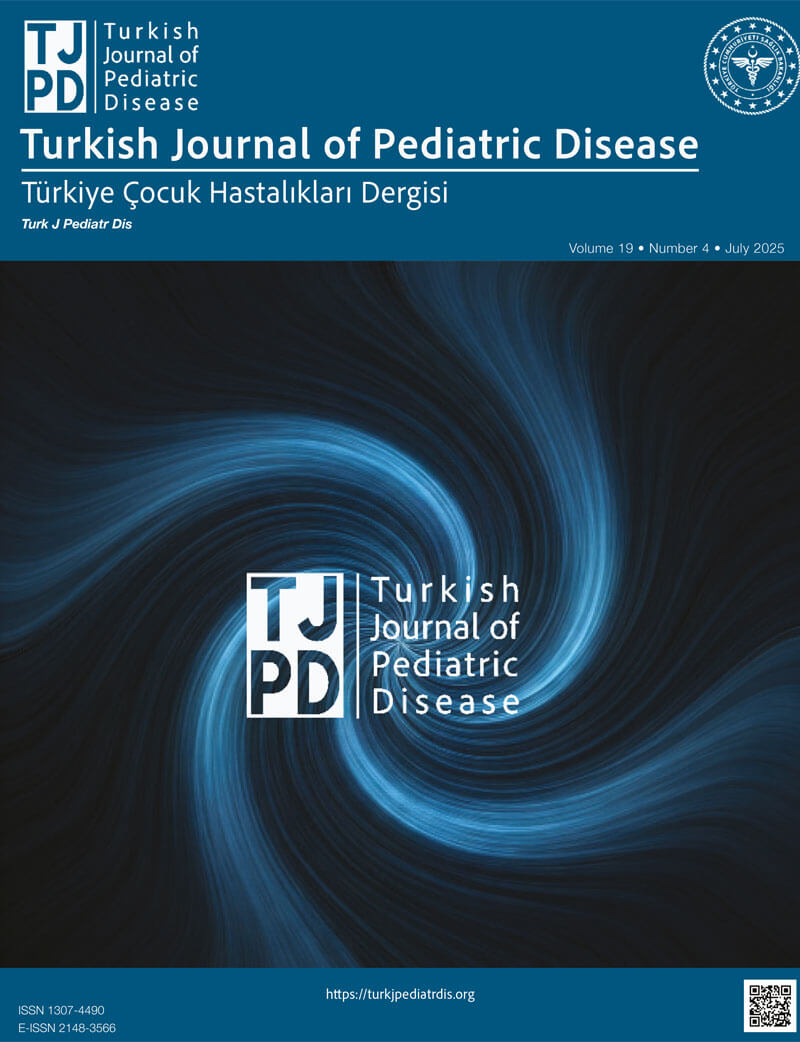Abstract
Objective: Pediatric penoscrotal trauma, though relatively uncommon, can lead to significant clinical consequences. These injuries, predominantly caused by blunt mechanisms, can also result from penetrating trauma, potentially leading to severe complications. Ultrasonography serves as a critical diagnostic tool, with timely surgical intervention being crucial, particularly in testicular rupture. This study aimed to evaluate the injury mechanisms, diagnostic processes, and treatment outcomes in pediatric patients sustaining penoscrotal trauma.
Material and Methods: This retrospective observational study included 31 male patients under 18 years old treated for isolated penoscrotal trauma from October 2020 to July 2024. Data collected included demographics, trauma type, injury mechanisms, ultrasonographic findings, and treatment methods. Patients were categorized into blunt and penetrating trauma groups, with age distribution and ultrasonographic follow-up comparisons conducted. SPSS version 25.0 was used for statistical analysis, and p<0.050 was considered statistically significant.
Results: The mean patient age was 8.94±3.52 years. Scrotal trauma accounted for 64.5% of cases, penile trauma 32.3%, and combined penoscrotal trauma 3.2%. Penetrating trauma (58.1%) was more prevalent than blunt trauma (41.9%), with bicycle accidents being the most frequent cause (38.7%). Most penetrating injuries required surgical intervention (15 patients), while blunt injuries were typically managed conservatively (10 patients). No significant difference in testicular volume was observed during follow-up ultrasonography among blunt trauma patients (p=0.068).
Conclusion: Management strategies for pediatric penoscrotal trauma differ based on trauma type. Early diagnosis and appropriate intervention appear essential for preserving testicular function and morphology.
Keywords: Chilhood trauma, doppler, genitourinary injury, ultrasonography
References
- Randhawa H, Blankstein U, Davies T. Scrotal trauma: A case report and review of the literature. Can Urol Assoc J. 2019;13(6 Suppl4):67-71. https://doi.org/10.5489/cuaj.5981.
- Sadjo SA, Destinval C, Lemelle JL, Berte N. Testicular rupture after blunt scrotal trauma in children: A case report and literature review. Trauma Case Rep. 2021;33:100482. https://doi.org/10.1016/j.tcr.2021.100482.
- Liguori G, Pavan N, d’Aloia G, Bucci S, de Concilio B, Mazzon G, et al. Fertility preservation after bilateral severe testicular trauma. Asian J Androl. 2014;16(4):650-1. https://doi.org/10.4103/1008-682X.126016.
- Li M, Chen J, Li F. Management of testicular rupture following blunt scrotal trauma. Asian J Surg. 2024;47(2):1021-2. https://doi.org/10.1016/j.asjsur.2023.10.088.
- Sallami S, Khouni H, Ichaoui H, Ben Atta M, Abou El Makarim S, Ben Rhouma S. Blunt scrotal trauma in adults: A multi-institution study evaluating the American Association for the Surgery of Trauma organ injury grading scale About 107 cases. Tunis Med. 2017;95(5):331-5.
- Hunter SR, Lishnak TS, Powers AM, Lisle DK. Male genital trauma in sports. Clin Sports Med. 2013;32(2):247-54. https://doi.org/10.1016/j.csm.2012.12.012.
- Bowen DK, Gonzalez CM. Intratesticular hematoma after blunt scrotal trauma: a case series and algorithm-based approach to management. Cent European J Urol. 2014;67(4):427-9. https://doi.org/10.5173/ceju.2014.04.art24.
- Papathanassiou ZG, Michalopoulou K, Alexopoulos V, Panagidis A. Testicular Rupture: Clinical, Sonographic, and Surgical Correlation in an Adolescent Patient. Cureus. 2025;17(2):e78688. https://doi.org/10.7759/cureus.78688.
- Guichard G, El Ammari J, Del Coro C, Cellarier D, Loock PY, Chabannes E, et al. Accuracy of ultrasonography in diagnosis of testicular rupture after blunt scrotal trauma. Urology. 2008;71(1):52-6. https://doi.org/10.1016/j.urology.2007.09.014.
- Buckley JC, McAninch JW. Use of ultrasonography for the diagnosis of testicular injuries in blunt scrotal trauma. J Urol. 2006;175(1):175-8. https://doi.org/10.1016/S0022-5347(05)00048-0.
- Owen CA, Winter T. Color Doppler Imaging of the Scrotum. Journal of Diagnostic Medical Sonography. 2006;22(4):221-30. https://doi.org/10.1177/8756479306290483.
- Gupta A, Dogra V. Role of color flow Doppler ultrasound in the evaluation of acute scrotal pain. Andrology. 2021;9(5):1290-7. https://doi.org/10.1111/andr.13058.
- Kim MJ, Lee DH, Park DH, Lee IJ. Multivariate analysis of early surgical management factors affecting posttraumatic penoscrotal avulsion injury: a level I trauma center study. BMC Urol. 2021;21(1):7. https://doi.org/10.1186/s12894-020-00763-7.
- Grigorian A, Livingston JK, Schubl SD, Hasjim BJ, Mayers D, Kuncir E, et al. National analysis of testicular and scrotal trauma in the USA. Res Rep Urol. 2018;10:51-6. https://doi.org/10.2147/RRU.S172848.
- Lynch TH, Martínez-Piñeiro L, Plas E, Serafetinides E, Türkeri L, Santucci RA, et al. EAU guidelines on urological trauma. Eur Urol. 2005;47(1):1-15. https://doi.org/10.1016/j.eururo.2004.07.028.
- Pogorelić Z, Jurić I, Biočić M, Furlan D, Budimir D, Todorić J, et al. Management of testicular rupture after blunt trauma in children. Pediatr Surg Int. 2011;27(8):885-9. https://doi.org/10.1007/s00383-011-2873-9.
- Wald M. Scrotal Trauma Treatment and Outcomes. WMJ. 2024;123(4):166-71.
- Dalton DM, Davis NF, O’Neill DC, Brady CM, Kiely EA, O’Brien MF. Aetiology, epidemiology and management strategies for blunt scrotal trauma. Surgeon. 2016;14(1):18-21. https://doi.org/10.1016/j.surge.2014.06.006.
- Redmond EJ, Mac Namara FT, Giri SK, Flood HD. Blunt testicular trauma - is surgical exploration necessary? Ir J Med Sci. 2018;187(4):1109-13. https://doi.org/10.1007/s11845-017-1724-7.
- Terrier R, Degache F, Fourchet F, Gojanovic B, Forestier N. Assessment of evertor weakness in patients with chronic ankle instability: Functional versus isokinetic testing. Clin Biomech (Bristol). 2017;41:54-9. https://doi.org/10.1016/j.clinbiomech.2016.12.002.
- Patterson K, Hennessey DB, O’Kelly F. A scoping review of historical and contemporary management strategies for paediatric scrotal trauma. Ir J Med Sci. 2025. https://doi.org/10.1007/s11845-025-03929-0.
Copyright and license
Copyright © 2025 The Author(s). This is an open access article distributed under the Creative Commons Attribution License (CC BY), which permits unrestricted use, distribution, and reproduction in any medium or format, provided the original work is properly cited.






